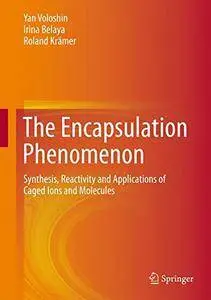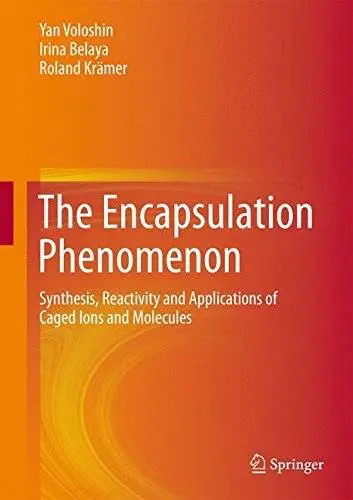The Encapsulation Phenomenon: Synthesis, Reactivity and Applications of Caged Ions and Molecules
Springer | Organic Chemistry | May 29, 2016 | ISBN-10: 3319277375 | 638 pages | pdf | 125.1 mb
Springer | Organic Chemistry | May 29, 2016 | ISBN-10: 3319277375 | 638 pages | pdf | 125.1 mb
Authors: Voloshin, Yan, Belaya, Irina, Krämer, Roland
An exhaustive summary of cage compounds and their chemistry, summarizing synthesis and introducing reactivity and applications
Contains over 850 literature references, clearly represented in over 600 schemes and illustrations
Clearly structured: separated chapters for each type of caging ligands (covalent, supramolecular, and coordination capsules), ordered by ligand classes and types of encapsulated species (cations, anions and neutral molecules)
This fundamental book presents the most comprehensive summary of the current state of the art in the chemistry of cage compounds. It introduces different ways of how ions and molecules can be encapsulated by three-dimensional caging ligands to form molecular and polymeric species: covalent, supramolecular, and coordination capsules. The authors introduce their classification, reactivity, and selected practical applications. Because encapsulation can isolate caged ions and molecules from external factors, the encapsulated species can exhibit unique physical and chemical properties. The resulting specific reactivity and selectivity can open up a range of applications, including chemical separation, recognition, chiral separation, catalysis, applications as sensors or probes, as molecular or supramolecular devices, or molecular carriers (cargo).A particularly strong emphasis in this book is on the summary and review of the synthesis of various types of cage compounds. Readers will find over 850 literature references summarized and clearly represented in over 600 schemes and illustrations. The book is structured by the types of caging ligands (covalent, supramolecular, or coordination capsules). The authors further arranged the chapters by ligand classes and types of encapsulated species (neutral molecules, anions, or cations). Readers will hence find an exhaustive reference resource and summary of the current state of research into encapsulated species, nowadays almost a separated realm of modern chemistry
Number of Illustrations and Tables
734 b/w illustrations, 784 illustrations in colour
Topics
Organic Chemistry
Inorganic Chemistry
Nanochemistry
Catalysis
Physical Chemistry
Click Here to Buy the Hardcover from Springer
Click Here for More books



